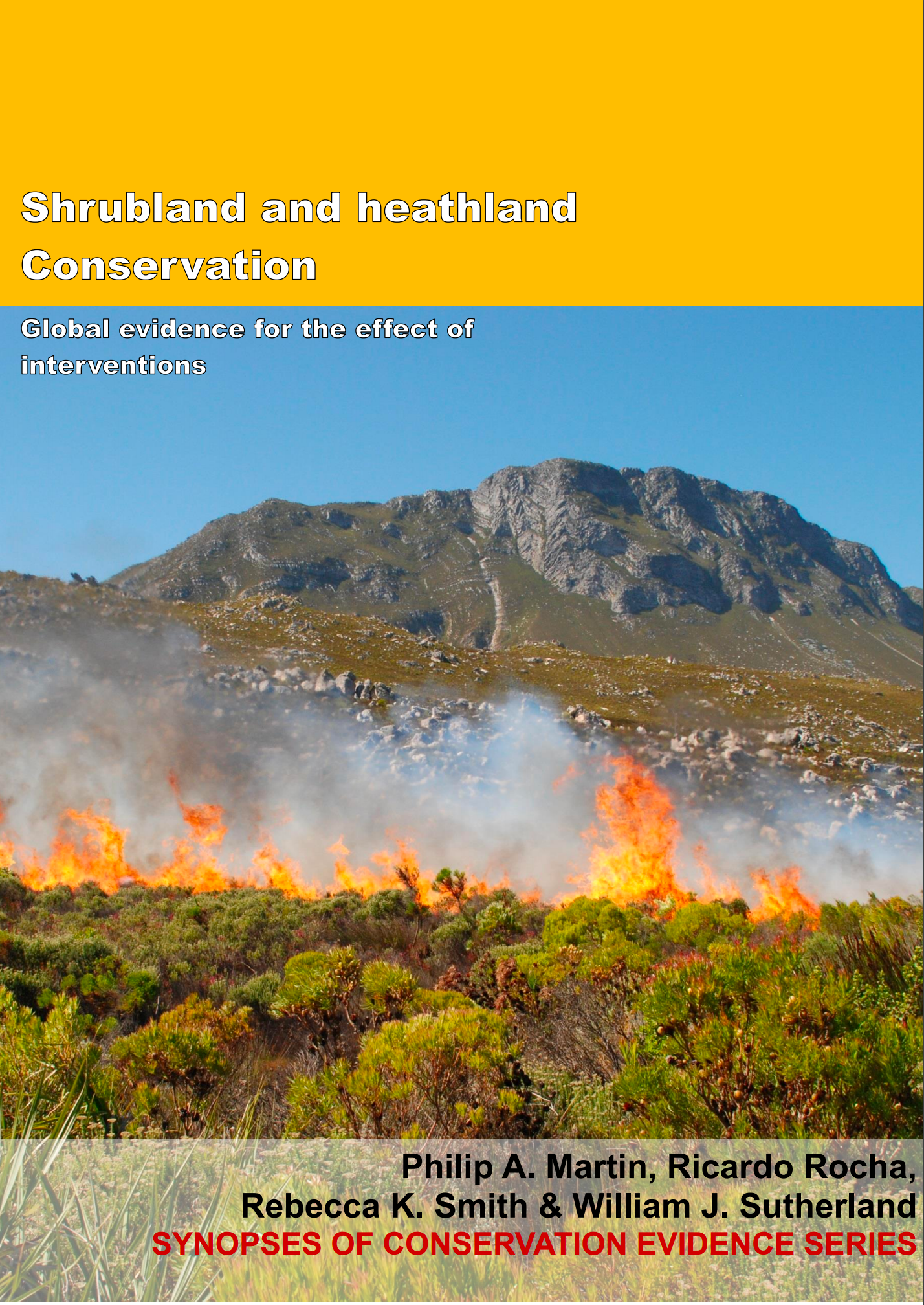Cut trees
-
Overall effectiveness category Unknown effectiveness (limited evidence)
-
Number of studies: 3
View assessment score
Hide assessment score
How is the evidence assessed?
-
Effectiveness
37% -
Certainty
30% -
Harms
3%
Study locations
Supporting evidence from individual studies
A randomized, replicated, controlled study in 1979–1981 in a heathland in Cambridgeshire, UK (Marrs 1984) found that cutting and pulling of silver birch Betula pendula increased the density of heather Calluna vulgaris seedlings but not that of mature common heather plants. There were more heather seedlings in plots where silver birch saplings had been cut or pulled (83–126 seedlings/m2) than in plots where silver birch saplings had not been cut or pulled (4 seedlings/m2), but there was no significant difference in mature heather density (cut/pulled: 8-11 plants/m2; uncut: 12 plants/m2). In two of three cases, areas where silver birch saplings had been cut or pulled had fewer silver birch saplings (0–5 saplings/m2) than areas where silver birch saplings had not been cut or pulled (20 saplings /m2), but in three of three cases there was no significant difference in the abundance of birch seedlings (cut/pulled: 9–19 seedlings/m2; uncut: 7 seedlings/m2). In four 4 m2 plots birch saplings were pulled out of the ground in 1979, in four plots birch saplings were cut in 1979, in four plots birch saplings were cut in 1979 and 1980, and in four plots birch saplings were not cut or pulled. Abundance of birch and heather plants was estimated annually in 1980-1981 in all plots.
Study and other actions testedA replicated, controlled study in 2010–2012 in fynbos habitat invaded by non-native trees in Western Cape Province, South Africa (Ruwanza et al. 2013) found that cutting non-native trees reduced their cover and increased herbaceous plant cover, but did not increase cover of native woody plants. After two years, the cover of native woody species was not significantly different in areas where non-native trees were cut (6%) and areas where non-native trees were not cut (10%), but was lower than in a relatively undisturbed fynbos site (60%). Cover of native herbaceous plants was higher in areas that were cut (5%) than areas that were not cut (0%) or in an undisturbed site (0%). In areas where non-native trees were cut their cover was lower (22%) than in areas where they were not cut (56%), but higher than in a relatively undisturbed fynbos site (7%). In 2010 non-native trees were cut and removed from part of the site. Eight 25 m2 plots were established in areas where trees were cut, eight in areas where trees were not cut, and four in a nearby undisturbed fynbos site. Vegetation cover was estimated in the plots in 2011 and 2012.
Study and other actions testedA site comparison study in 1999–2014 in two fynbos sites in Eastern Cape, South Africa (Ndou & Ruwanza 2016) found that after clearing non-native acacia Acacia spp. the number of plant species was similar to that found in a nearby undisturbed, but cover of trees and shrubs was lower and grasses higher. After 15 years the number of plant species at the site where non-native acacia trees had been cleared (13 species) was not significantly different from that at an undisturbed site (15 species). The cover of trees and shrubs was lower at the site that had been cleared (39%) than in the undisturbed site (69%). Grass cover was higher in the site that had been cleared (27%) than in the undisturbed site (11%). In 1999 non-native acacia trees were cleared from a fynbos site. In 2014 three 100 m2 plots were established where non-native acacias were cleared and three in an undisturbed site nearby. Vegetation cover in each plot was assessed in June 2014.
Study and other actions tested
Where has this evidence come from?
List of journals searched by synopsis
All the journals searched for all synopses
This Action forms part of the Action Synopsis:
Shrubland and Heathland Conservation
Shrubland and Heathland Conservation - Published 2017
Shrubland and Heathland synopsis





)_2023.JPG)














